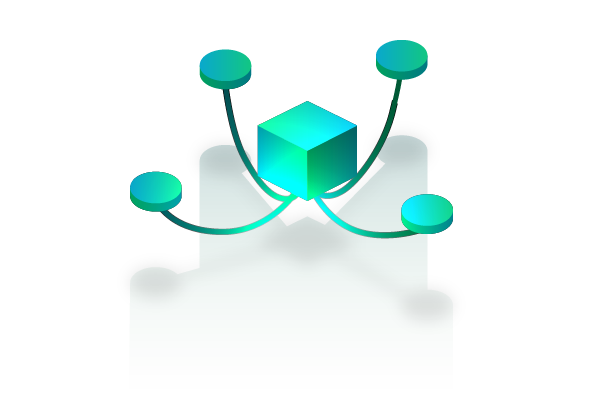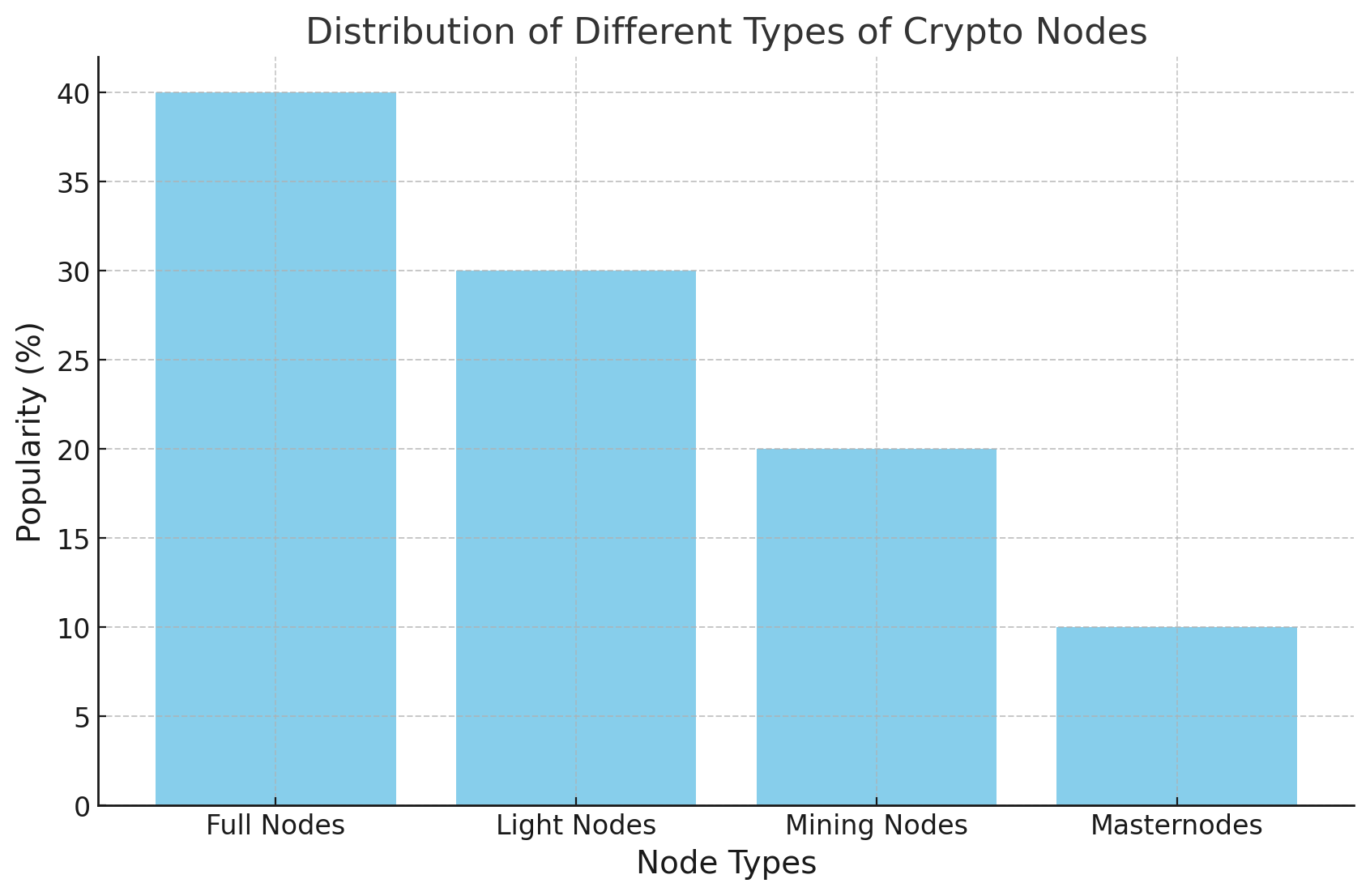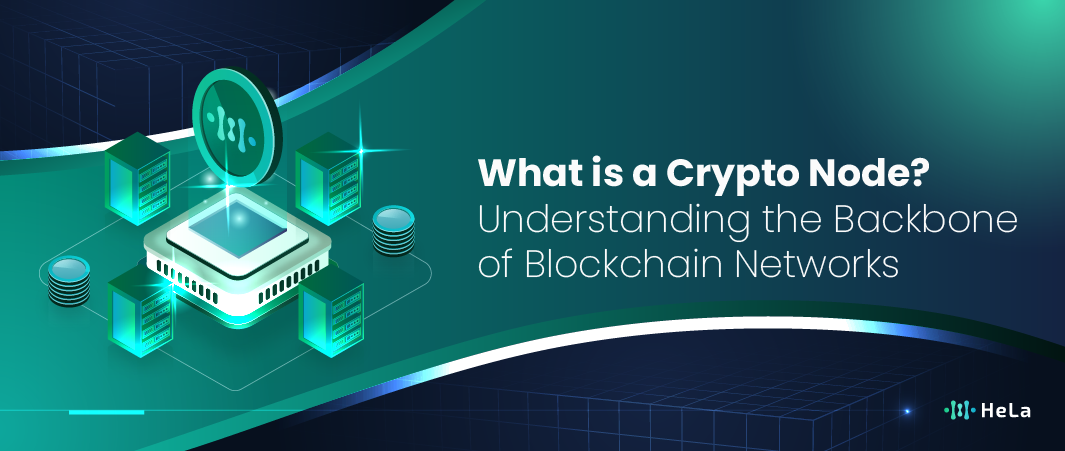Blockchain technology has grown rapidly over the past decade, and with it, so has the interest in the fundamental components that power this revolutionary ecosystem. Among these essential component is a crypto node, which are critical to the operation and success of blockchain networks like Bitcoin and Ethereum. Nodes are responsible for maintaining the security, integrity, and decentralized nature of blockchain technology, making them an indispensable part of the infrastructure.
Understanding crypto node is crucial for anyone looking to deepen their knowledge of blockchain and cryptocurrencies. Whether you are an investor, developer, or simply a blockchain enthusiast, knowing how nodes work and their importance to the overall system provides valuable insight into how decentralized networks function. In this article, we will explore what crypto node is, their various types and functions, and why they play such a vital role in keeping blockchain networks secure and decentralized.
What is Crypto Node?
The term ‘crypto node’ often comes up when discussing blockchain technology, yet many people remain unclear about its meaning and significance. Crypto node is essentially one of the fundamental components of a blockchain network, playing a critical role in maintaining the security, integrity, and transparency of the blockchain. To fully understand what a crypto node is and why it matters, it’s helpful to explore its different types, functions, and importance to decentralized systems like Bitcoin and Ethereum.
The blockchain itself is a distributed ledger that records every transaction that has ever taken place on the network. Nodes are responsible for storing, verifying, and sharing this ledger, ensuring that all participants have an accurate and consistent version of the blockchain. Without nodes, a blockchain network cannot exist or function as intended.
In this article, we’ll explore the concept of crypto nodes, their various functions, the different types of nodes that exist, and why they are essential to blockchain networks. We will also touch upon how you can run your own node and the benefits that come with doing so.
Read More: What is Layer 1 (L1) in Blockchain?
Functions of a Crypto Node

Crypto nodes perform several vital functions that are essential to the blockchain network’s operations. Some of these functions include:
- Transaction Verification: Nodes validate transactions before they are added to the blockchain. This means verifying that a sender has enough funds to complete a transaction and ensuring that there is no double-spending.
- Block Validation: In addition to verifying transactions, nodes also validate new blocks. When a new block is mined, nodes check that it follows all of the rules of the network, including the consensus protocol, before adding it to their copy of the blockchain.
- Consensus Participation: Nodes play a key role in reaching consensus within the network. Consensus mechanisms, such as Proof of Work (PoW) or Proof of Stake (PoS), help ensure that all nodes agree on the current state of the blockchain. By doing so, nodes maintain the integrity and security of the network.
- Propagation of Information: Nodes are also responsible for propagating information throughout the network. When a new transaction or block is validated, nodes share this information with other nodes, helping to keep the entire network up to date.
Types of Crypto Nodes

There are several different types of nodes in a blockchain network, each with its own specific purpose and functionality:
1. Full Nodes
Full nodes are the backbone of the blockchain network. They store a complete copy of the blockchain ledger, validate transactions, and participate in the consensus process. Full nodes play a crucial role in maintaining the integrity of the blockchain and ensuring that all participants follow the rules. Running a full node requires significant storage space and computational power, as the entire history of the blockchain must be downloaded and maintained.
2. Light Nodes (Lightweight or SPV Nodes)
Light nodes, also known as lightweight nodes or Simplified Payment Verification (SPV) nodes, do not store the entire blockchain ledger. Instead, they download only the necessary headers of each block to verify transactions. Light nodes are more resource-efficient and require less storage and computational power compared to full nodes. They rely on full nodes for information, making them less autonomous but more practical for devices with limited resources.
3. Mining Nodes
Mining nodes are specialized nodes that are responsible for creating new blocks in a Proof of Work (PoW) blockchain like Bitcoin. Mining nodes use computational power to solve complex mathematical problems, allowing them to add new blocks to the blockchain. In return, miners receive block rewards as an incentive for maintaining the network.
4. Masternodes
Masternodes are a special type of node found in certain blockchain networks, such as Dash. They perform additional functions beyond those of regular nodes, including facilitating instant transactions, private transactions, and governance. Running a masternode typically requires a significant stake in the native cryptocurrency and contributes to the stability and security of the network.

Here is the graph illustrating the hypothetical distribution of different types of crypto nodes. This visualization helps highlight the relative popularity and roles of each node type within blockchain networks.
Why Are Crypto Nodes Important?

Crypto nodes are vital for the successful operation of blockchain networks for several reasons:
- Decentralization: Nodes contribute to the decentralization of the blockchain by ensuring that there is no single point of control or failure. The more nodes that exist in a network, the more decentralized and secure the network becomes.
- Security: Nodes help secure the blockchain by validating transactions and ensuring that all participants are following the rules. They work together to prevent malicious activities like double-spending and attacks on the network, which is crucial to maintaining trust among participants.
- Transparency: Since each full node keeps a complete copy of the blockchain ledger, it ensures transparency for all transactions. Anyone can verify the state of the blockchain at any time, which is one of the fundamental principles of decentralized systems.
Running a Crypto Node
Running a crypto node can be a rewarding experience for those who want to contribute to the security and stability of a blockchain network. Running a node helps decentralize the network and ensures that it remains resistant to censorship and attacks. Below are the general steps to set up a node:
- Choose a Blockchain Network: Decide which blockchain network you want to support. For example, Bitcoin, Ethereum, or a newer network like Solana or Cardano.
- Check Hardware Requirements: Make sure your computer or server meets the hardware requirements to run a full node. This usually includes a stable internet connection, enough disk space (often several hundred gigabytes), and sufficient RAM.
- Download and Install Node Software: Download the official software for the blockchain you want to support. For Bitcoin, this would be Bitcoin Core, while for Ethereum, it could be Geth or another client.
- Sync with the Blockchain: Once installed, your node software will start downloading the blockchain. This can take a significant amount of time, especially for larger blockchains like Bitcoin or Ethereum.
- Stay Online: To fully participate in the network, your node should be online as often as possible. This ensures that your node can validate transactions, propagate information, and contribute to the network’s stability.
Benefits of Running Your Own Node
Running your own crypto node has several benefits:
- Enhanced Privacy and Control: By running your own node, you don’t have to rely on third parties to interact with the blockchain. This means greater privacy and more control over your transactions.
- Support the Network: Running a node helps support the network’s decentralization and security, which is essential for blockchain’s core principles. The more nodes in a network, the more robust and resistant to attacks it becomes.
- Direct Verification: When you run your own node, you can verify all transactions and blocks directly. This ensures that you are getting accurate information without relying on potentially compromised third-party services.
Advantages and Challenges of Different Node Types
Each type of crypto node plays a significant role in blockchain ecosystems, but they also come with their unique advantages and challenges. Understanding these nuances can help potential node operators choose the right kind of node for their goals and resources.
Full Nodes provide the highest level of security and autonomy for users. By storing the complete blockchain ledger, full nodes ensure maximum transparency and verification capabilities. However, the challenge of running a full node lies in the substantial resource requirements, such as high disk space and computational power. Operating a full node demands constant synchronization and connectivity, making it more suitable for those with dedicated hardware and technical expertise.
Read More: 15+ Best Crypto Staking Platforms in 2025
Light Nodes are easier to operate, as they require less storage and computational resources compared to full nodes. They offer the convenience of blockchain participation without the need to store the entire blockchain. This makes them ideal for casual users who want to verify transactions without committing significant resources. The main drawback, however, is that light nodes rely on full nodes for data, meaning they cannot function independently and do not provide the same level of network security.
Mining Nodes are integral to Proof of Work (PoW) blockchain networks like Bitcoin. These nodes are responsible for mining new blocks and securing the network through computational work. While mining can be lucrative, it requires considerable resources in terms of specialized hardware (e.g., ASIC miners) and high energy consumption. The challenges associated with mining nodes include the initial investment in equipment and the continuous operational costs, such as electricity and maintenance.
Masternodes bring additional functionalities to certain blockchain networks, including enhanced privacy features, instant transactions, and governance roles. Running a masternode can be financially rewarding, as operators often receive rewards for their contributions to the network. However, masternodes usually require a significant upfront investment in the form of a cryptocurrency stake, and they need to be online continuously to perform their functions. This high barrier to entry makes masternodes more suitable for users who are committed to the long-term success of the network.
Conclusion
Crypto nodes are essential building blocks of blockchain networks, ensuring security, decentralization, and transparency. Without nodes, blockchain technology could not exist in its current form, as nodes work together to validate transactions, maintain consensus, and distribute information throughout the network. Whether it’s full nodes, light nodes, or specialized nodes like masternodes, each type of node plays a vital role in maintaining the blockchain ecosystem.
Running a crypto node may require some initial investment in terms of hardware and time, but it offers numerous benefits, such as increased privacy, better control over your transactions, and the satisfaction of contributing to the blockchain network’s resilience and security. As blockchain technology continues to evolve, crypto nodes will remain at the core of this innovative space, powering the decentralized future we envision.
Disclaimer: The information provided by HeLa Labs in this article is intended for general informational purposes and does not reflect the company’s opinion. It is not intended as investment advice or recommendations. Readers are strongly advised to conduct their own thorough research and consult with a qualified financial advisor before making any financial decisions.

Hi, I’m Kris. I’ve been passionate about Web3 technology and its potential for a long time. I’m especially interested in layer 1 solutions, as they’re key to building decentralized networks. I love exploring how these innovations are making digital systems more transparent and efficient.
- Jefferson Krishttps://helalabs.com/blog/author/kris/
- Jefferson Krishttps://helalabs.com/blog/author/kris/
- Jefferson Krishttps://helalabs.com/blog/author/kris/
- Jefferson Krishttps://helalabs.com/blog/author/kris/

